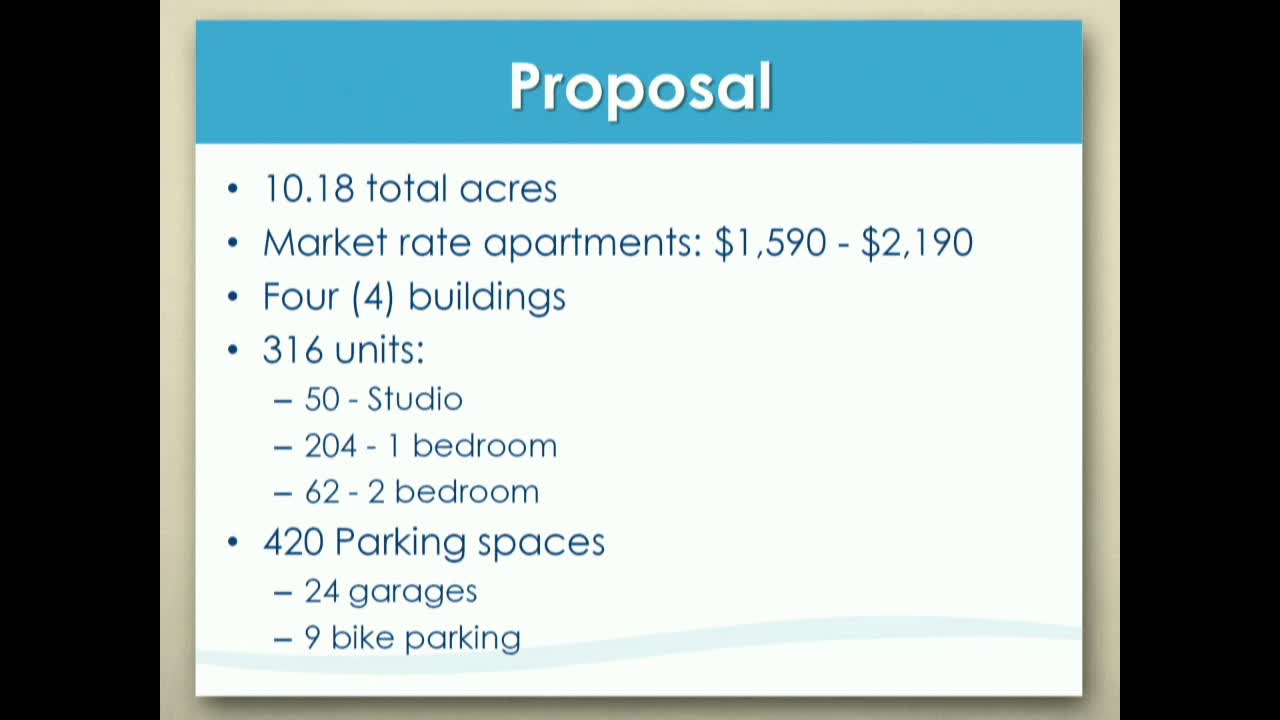City Council approves rezoning for 316 unit apartment complex with community amenities
July 09, 2025 | Hampton City (Independent City), Virginia
This article was created by AI summarizing key points discussed. AI makes mistakes, so for full details and context, please refer to the video of the full meeting. Please report any errors so we can fix them. Report an error »

The Hampton City Council convened on July 9, 2025, to discuss a significant residential development proposal aimed at enhancing the community's housing options. The meeting focused on a plan for a new apartment complex that would consist of 316 market-rate units, including 50 studio apartments, 204 one-bedroom apartments, and 62 two-bedroom apartments. The proposed monthly rental rates for these units would range from $1,600 to $2,200.
The development is designed to feature four buildings, with three being four stories tall and one standing three stories. The complex will include 420 parking spaces, 24 of which will be garages. The architectural style proposed is a modern farmhouse, utilizing high-quality materials such as cementitious board and batten siding, stone veneer, and brick veneer, along with energy-efficient features like Energy Star certified appliances.
Community amenities are a key aspect of the proposal, which includes a clubhouse with various recreational facilities, a resort-style pool, grilling and dining areas, and outdoor gathering spaces. Notably, the existing Woods Orchard barn on the property is set to be preserved and restored as a community amenity.
The development plan also emphasizes sustainability, proposing five electric vehicle charging stations and building materials rated for high wind loads. The primary access to the complex will be from Mercury Boulevard, with additional access from Woodland Road. Traffic improvements, including a left turn lane and a proposed right turn lane, are part of the plan to enhance safety and accessibility.
The council discussed the rezoning of portions of the property from General Commercial (C3) and Low Density Residential (R11) to Medium Density Residential (MD4). This change is intended to facilitate the development of high-density residential housing, which aligns with the city’s goals for economic growth and revitalization of underutilized land.
Public input was gathered during a community meeting held in March, which saw approximately 75 attendees expressing their views on the project. The staff analysis indicated that the proposal aligns with the future land use map and would provide much-needed residential units while enhancing community amenities.
The council ultimately recommended approval of the rezoning and use permit, emphasizing the importance of compliance with proposed conditions regarding property management, landscaping, and traffic improvements. The meeting concluded with a positive outlook on the development's potential to contribute to the city's housing supply and community engagement.
The development is designed to feature four buildings, with three being four stories tall and one standing three stories. The complex will include 420 parking spaces, 24 of which will be garages. The architectural style proposed is a modern farmhouse, utilizing high-quality materials such as cementitious board and batten siding, stone veneer, and brick veneer, along with energy-efficient features like Energy Star certified appliances.
Community amenities are a key aspect of the proposal, which includes a clubhouse with various recreational facilities, a resort-style pool, grilling and dining areas, and outdoor gathering spaces. Notably, the existing Woods Orchard barn on the property is set to be preserved and restored as a community amenity.
The development plan also emphasizes sustainability, proposing five electric vehicle charging stations and building materials rated for high wind loads. The primary access to the complex will be from Mercury Boulevard, with additional access from Woodland Road. Traffic improvements, including a left turn lane and a proposed right turn lane, are part of the plan to enhance safety and accessibility.
The council discussed the rezoning of portions of the property from General Commercial (C3) and Low Density Residential (R11) to Medium Density Residential (MD4). This change is intended to facilitate the development of high-density residential housing, which aligns with the city’s goals for economic growth and revitalization of underutilized land.
Public input was gathered during a community meeting held in March, which saw approximately 75 attendees expressing their views on the project. The staff analysis indicated that the proposal aligns with the future land use map and would provide much-needed residential units while enhancing community amenities.
The council ultimately recommended approval of the rezoning and use permit, emphasizing the importance of compliance with proposed conditions regarding property management, landscaping, and traffic improvements. The meeting concluded with a positive outlook on the development's potential to contribute to the city's housing supply and community engagement.
View full meeting
This article is based on a recent meeting—watch the full video and explore the complete transcript for deeper insights into the discussion.
View full meeting
